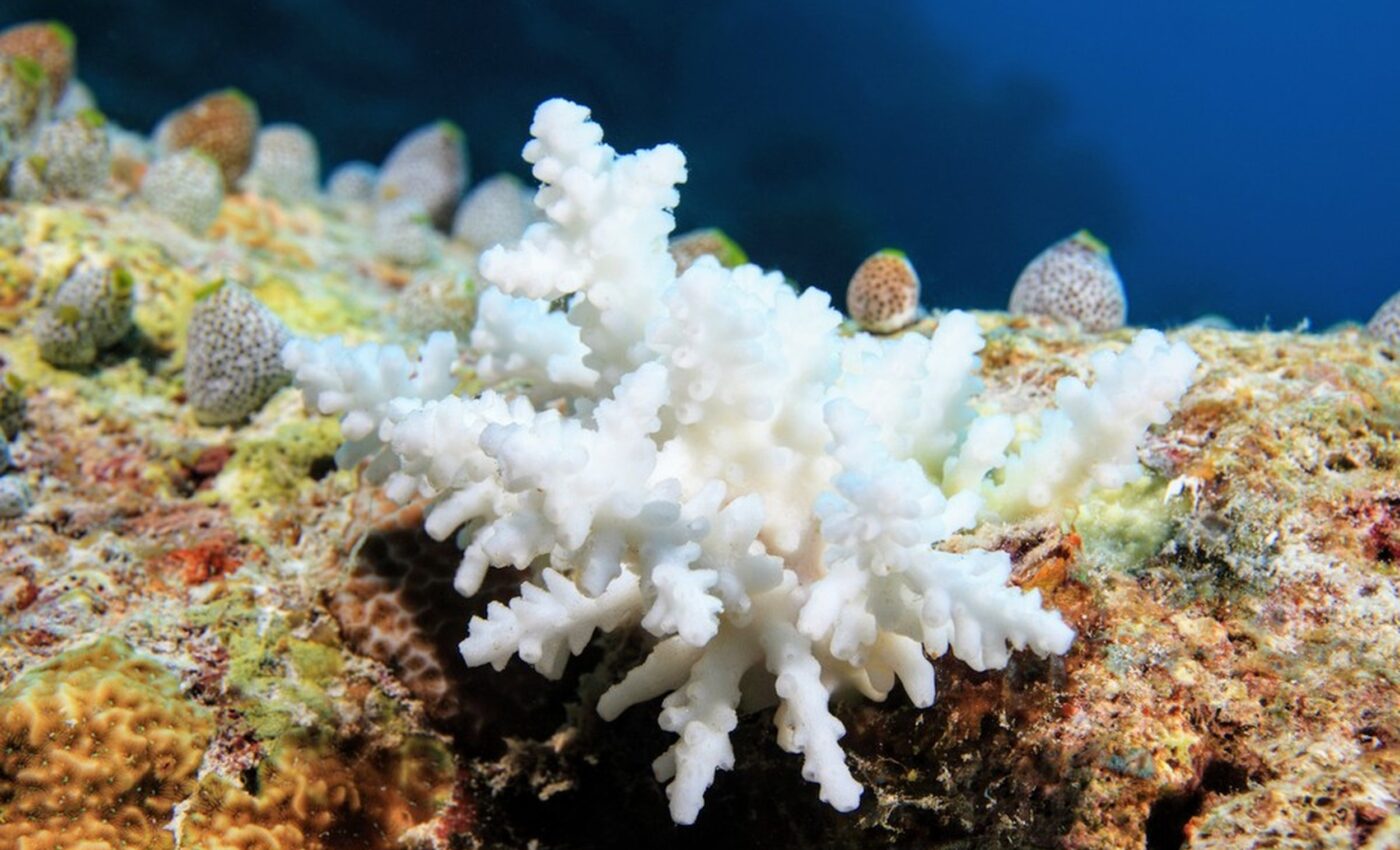
Coral bleaching hinders reproduction in popular reef species
Coral bleaching, a growing crisis worsened by climate change, doesn’t just leave reefs looking faded – the damage goes much deeper.
New research reveals that bleaching can harm a coral reef’s reproduction ability, slowing down reef recovery and jeopardizing their long-term survival.
What is coral bleaching?
Corals might look like colorful rocks, but they are actually colonies of tiny animals called polyps. These polyps have a mutually beneficial relationship with algae that live inside their tissues. The algae provide food for the coral through photosynthesis and give them their beautiful colors.
However, rising ocean temperatures stress corals, causing them to expel this vital algae, leaving them bleached. While some corals can survive bleaching, it’s a traumatic experience, like weathering a serious illness. Even if the coral appears to recover its color, hidden damage often lingers.
Coral bleaching’s impact on reproduction
A study by experts at the Australian Institute of Marine Science on the Great Barrier Reef is shedding light on the hidden consequences of coral bleaching. Scientists focused on a common and hardy coral species known as Acropora millepora.
Despite showing signs of recovery after a bleaching event, these corals produced a shocking 21% fewer eggs during their reproductive cycle.
“Coral bleaching isn’t always a death sentence for every coral,” explained Nico Briggs, the study’s lead author. “But our research shows there is a price to pay for recovery in terms of a coral’s reproductive capacity, which is a critical driver of replenishing coral reefs after major disturbances.”
Think of coral reproduction as crucial for reseeding and expanding a reef after a damaging event like bleaching. When corals produce fewer eggs, it’s like having fewer seeds to plant a new forest – recovery will be much slower.
Climate change worsens coral bleaching
The Great Barrier Reef is currently facing its fifth mass bleaching event since 2016. This alarming frequency underscores the devastating impact of climate change on coral reefs worldwide.
Briggs warns that these stressful events put surviving coral populations in an uphill battle. While some corals might endure, their ability to fully recover and replenish the reef is seriously compromised.
Dr. Cathie Page, one of the study’s co-authors, highlights a small glimmer of hope. Some corals in the study area showed more resilience after the 2020 bleaching, likely due to favorable environmental factors like cooler water currents.
“Their resilience is partly to do with environmental conditions in the region, with tides and currents helping to reduce water temperatures, provide sun protection and deliver extra food,” Page explained.
Conservation of coral reproduction
The study demonstrates why understanding the full scope of coral bleaching is crucial for conservation efforts. We cannot assume that corals will simply keep bouncing back indefinitely. It’s a wake-up call to address the root causes of this crisis and support the resilience of reef ecosystems.
“The best chance for coral reefs to persist into the future requires a strong reduction in global greenhouse emissions to stabilize temperatures, best practice management of local pressures, and the development of innovative interventions to help boost climate tolerance and resilience for coral reefs,” said Briggs.
Impacts beyond coral reproduction
Coral bleaching affects coral reefs in several critical ways beyond just hampering reproduction:
Biodiversity loss
Coral reefs are home to a vast array of marine life. When corals bleach and potentially die, it leads to a loss in biodiversity, affecting species that depend on coral reefs for food, shelter, and nursery grounds.
Ecosystem services
Coral reefs provide valuable services including coastal protection from storms and erosion, fisheries, and tourism. Bleaching events compromise these services, affecting human communities and economies.
Altered species composition
Bleaching can lead to shifts in the species composition of reefs. More resilient species may dominate, altering the ecological balance and functions of reef ecosystems.
Decreased food web efficiency
Coral bleaching disrupts the base of the reef food web. Reduced coral cover means less food and habitat for herbivores, which affects the entire food chain.
Habitat structure loss
Bleached corals can die, leading to the loss of the complex three-dimensional structure of reefs. This structure is crucial for many marine species for breeding, feeding, and protection.
Increased vulnerability to diseases
Stressed and bleached corals are more susceptible to diseases, which can further reduce coral cover and affect reef health.
Reduced resilience to other stressors
Bleaching diminishes a reef’s ability to cope with other stressors like pollution, overfishing, and acidification, making recovery more difficult.
Economic impacts
Many economies rely on coral reefs for tourism, fisheries, and coastal protection. Bleaching events can lead to significant economic losses in these sectors.
Addressing the multifaceted impacts of coral bleaching requires comprehensive strategies including global action on climate change, local conservation efforts, and innovative research into coral resilience and recovery.
What can you do to help in coral reproduction?
Protecting coral reefs might seem like a daunting task, but every action counts. Here’s how you can help:
- Reduce your carbon footprint: Drive less, use energy-efficient appliances, eat less meat, and support renewable energy sources.
- Support sustainable businesses: Choose products and services that prioritize reef health and avoid those that contribute to pollution or overfishing.
- Spread the word: Share what you’ve learned about coral bleaching and inspire others to protect our precious oceans.
The study is published in the journal Coral Reefs.
—–
Like what you read? Subscribe to our newsletter for engaging articles, exclusive content, and the latest updates.
Check us out on EarthSnap, a free app brought to you by Eric Ralls and Earth.com.
—–













